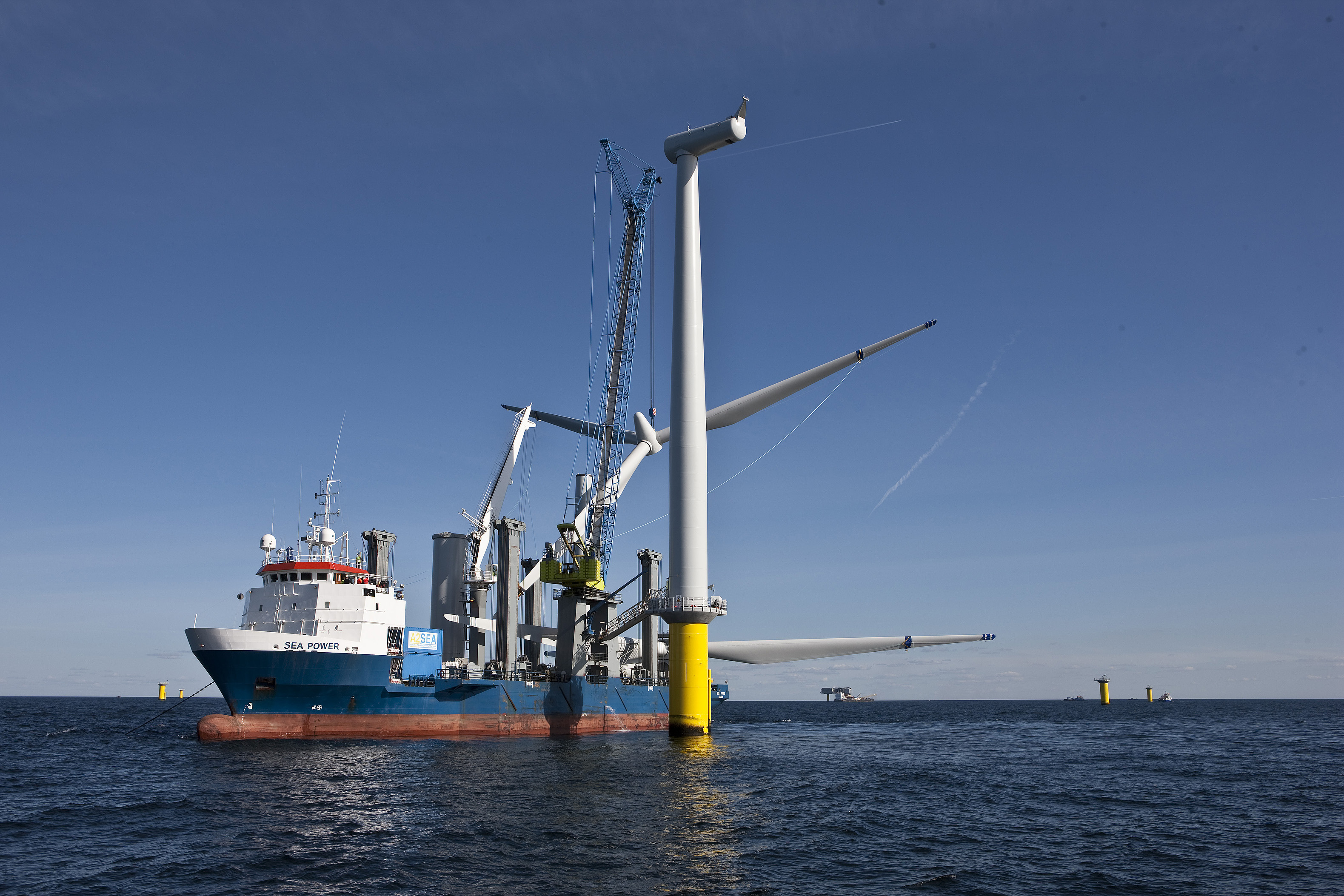
Offshore wind farms are gaining popularity in the UK and around the world due to the current interest in the need for greener energy sources, security of energy supply and the public’s reluctance to have wind farms on-shore. Offshore wind farms often contain hundreds of turbines supported at heights of 30m to 50m. The preferred foundations for these tall structures are large diameter monopiles due to their ease of construction in shallow to medium water depths. These monopiles are subjected to large cyclic, lateral and moment loads in addition to axial loads. It is anticipated that each of these foundations will see many millions of cycles of loading during their design life.
In coastal waters around the UK it is common for these monopiles to pass through shallow layers of soft, poorly consolidated marine clays before entering into a stiffer clay/sand strata. One of the biggest concerns with the design of monopiles is their long term behaviour under very large numbers of cycles of lateral and moment loads. The current design methods rely heavily on stiffness degradation curves for clays available in the literature that were primarily derived for earthquake loading on relatively small diameter piles with relatively small numbers of cycles of loading. Extrapolation of this stiffness deterioration to large diameter piles with large numbers of cycles of loading represents the key risk factor in assessing the performance of offshore wind turbines. Understanding this long term behaviour of monopiles is one of the main objectives of current research at Cambridge.
The photograph above shows an example of an existing offshore wind farm. Each wind turbine unit can weigh up to 6MN and can experience a lateral load of 4MN and a moment load of 120MN-m at the sea bed. The construction industry’s preferred option for the foundations of these structures is monopiles. A view of the monopiles used for offshore foundations is presented below.  These are 4m diameter piles with a driven length of 20m below the seabed and a further 5m of water depth. Further, the recent trend is to increase the diameter of the monopiles up to 7m for larger wind turbines. The photograph below the driving operation of the monopile is presented. Typically a jack-up platform is used to drive these monopiles into the seabed.
These are 4m diameter piles with a driven length of 20m below the seabed and a further 5m of water depth. Further, the recent trend is to increase the diameter of the monopiles up to 7m for larger wind turbines. The photograph below the driving operation of the monopile is presented. Typically a jack-up platform is used to drive these monopiles into the seabed.
In UK coastal regions the soil conditions are often layered with relatively soft, poorly consolidated marine clay layers close to the seabed surface that extend to a depth of about 8-10m, underlain by stiffer, more competent clay/sand layers. The monopiles are often driven through the softer clay layers into the stiffer clays until the required axial capacity is mobilised to support the wind turbine and superstructure. The completed structure is subjected to a large number of cycles of lateral and moment loading during its design life due to both wind and wave loading. This type of cyclic loading is quite different from other forms of cyclic loading such as earthquake loading in terms of frequency, amplitude and number of cycles. Current design techniques for onshore wind farm foundations consider the dynamic response of the structure and aim for the natural frequency of the super-structure to be away from the operating frequency of the turbines. The foundation design would consequently be based on dynamic properties of the soil. For offshore facilities the design of the monopile is dictated by the need to have the natural frequency of the tower-monopile system in a narrow band of frequencies to avoid the driving frequencies of the turbine and the blades.
